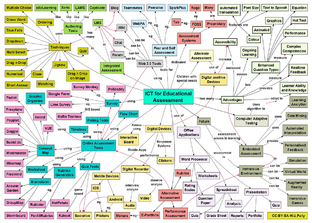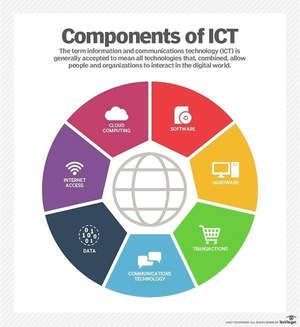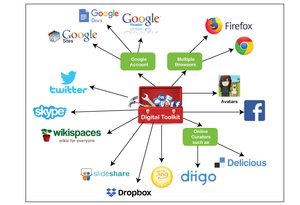ICT - Information and Communications Technology
What Does ICT Stand For?
Telecommunications, broadcast media, intelligent building management systems, audiovisual processing and transmission systems, and network-based control and monitoring functions all fall under the category of information and communications technology (ICT).
Although ICT is frequently used interchangeably with information technology (IT), its reach is in some ways broader. The term "information and communication technology" is frequently used to describe the convergence of various technologies and the usage of common transmission channels to transmit a wide range of data and communication types and formats.
In a nutshell, ICT refers to all of the technology that make communication easier.
With such in mind, the word ICT has been given various different definitions. It's usually linked to consolidating and controlling telecom infrastructure as well as converging technologies with shared transmission lines.
ICT is sometimes linked to providing telecommunications services to underserved areas or encouraging more robust telecommunications and IT networks and services to help people advance their careers.



ICT TOOLS
ICT tools are a set of recently created technologies that allow for more efficient information exchange, and have changed how people acquire knowledge and, as a result, human relationships.
Computers, laptops, printers, scanners, software applications, data projectors, and interactive teaching boxes are all examples of ICT gear.
IMPORTANCE OF ICT TOOLS
ICT tools help to high-quality courses by increasing student motivation, connecting students to a variety of knowledge sources, supporting active in-class and out-of-class learning settings, and allowing instructors to devote more time to facilitation.
Advantages of ICT Tools
- Cost-efficient
- Provide the facility for easy student management
- Direct classroom teaching
- Improved modes of communication
- Eco-friendly-Eliminate the usage of paper
- Direct classroom teaching
- Minimize cost and saves time
- Improved data and information security
- Web-based LMS tools link teachers, students, researchers, and scholars and education together.
- Teachers are able to teach better with graphics, video and graphics.
- Teachers can create interesting, well-designed and engaging classroom activities.
- Provide better teaching and learning methods
- To spread awareness about the social impact of technological change in education.
- Promoting and improving the digital culture in universities, colleges, and schools.
- Automated solutions to paper-based manual procedures and processes
Disadvantages of ICT Tools
- Unemployment
- Lack of security/privacy
- Cyber bullying
- Reliance on technology
- Social media
- Preparation time